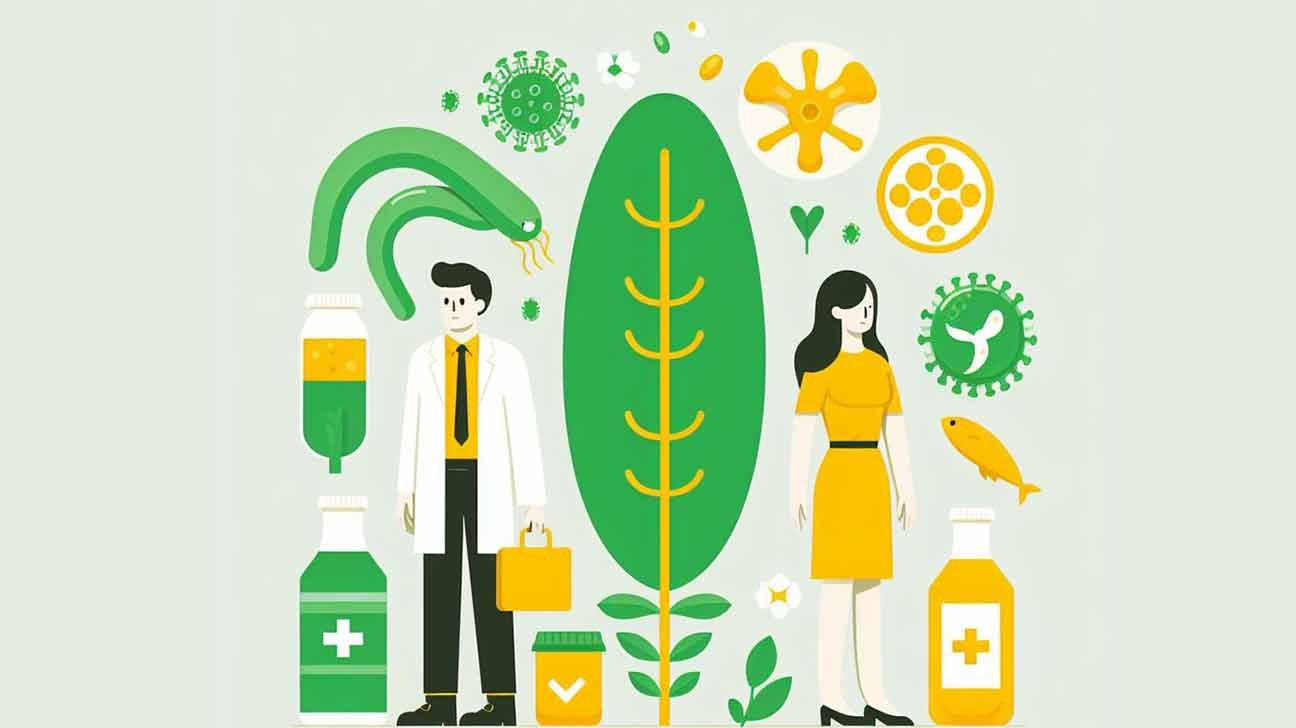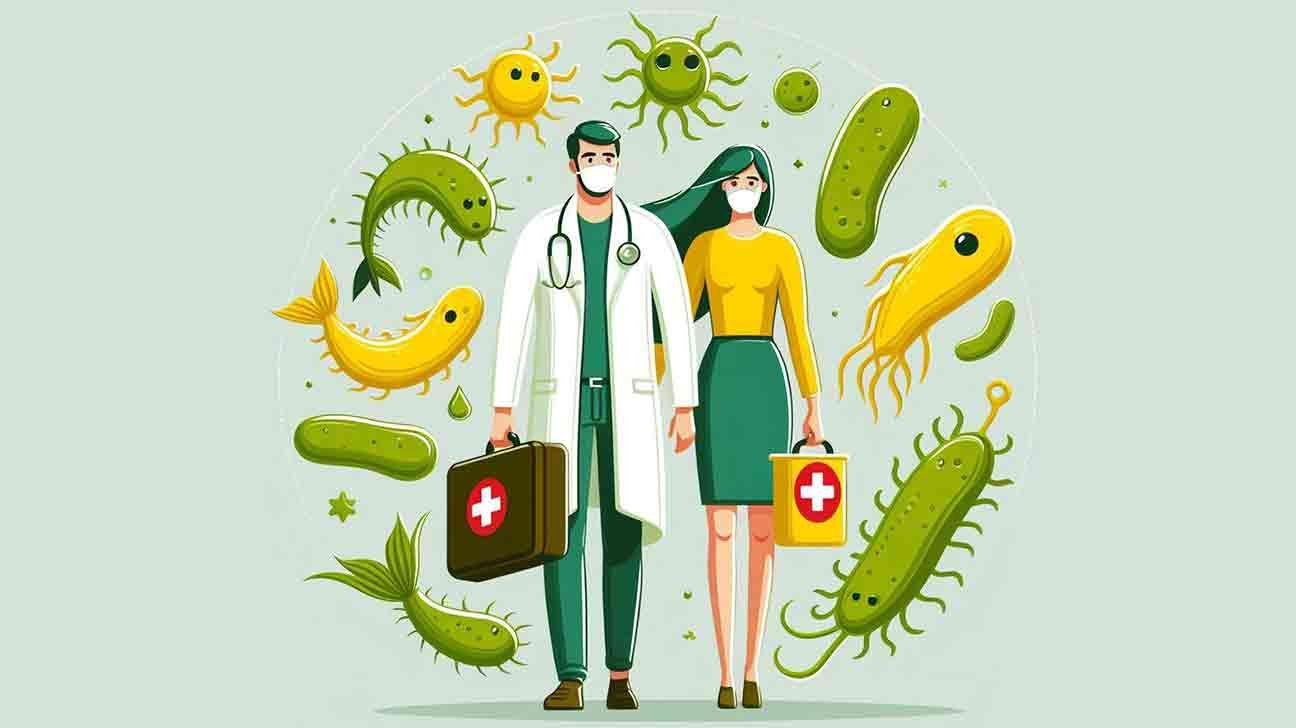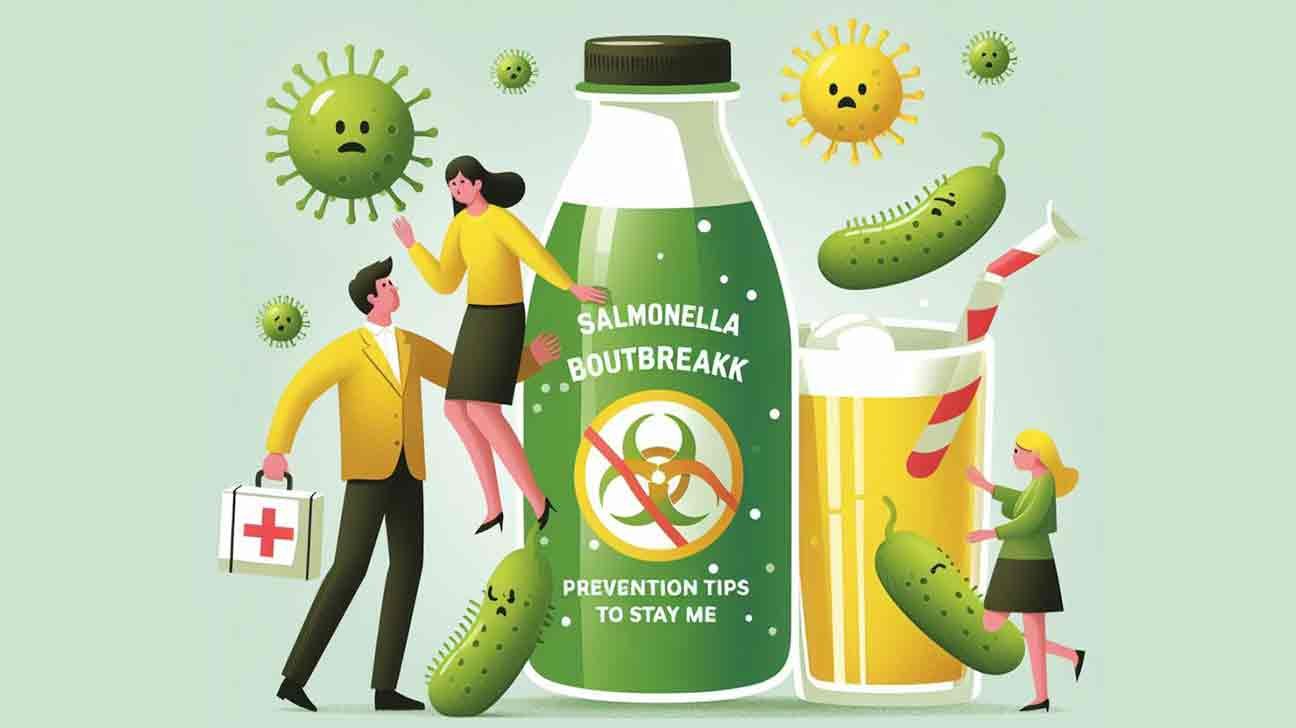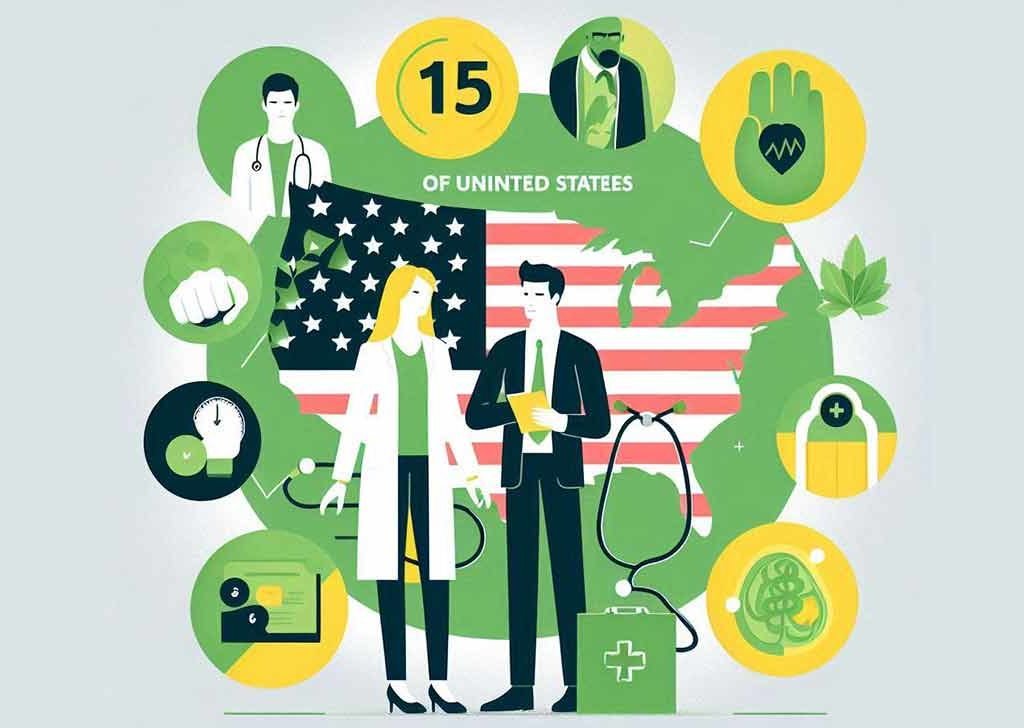Salmonella outbreaks in the U.S. have caused significant health concerns, as they can result in serious illness and even hospitalization. These outbreaks often stem from contaminated food, water, or surfaces. By understanding the risks and taking preventive steps, you can greatly reduce the likelihood of contracting this infection.
Here are some key prevention tips to stay safe from future Salmonella outbreaks:
1. Proper Food Handling and Cooking
- Cook Thoroughly: Ensure that meat, poultry, and eggs are cooked to the recommended internal temperature. Poultry should reach an internal temperature of 165°F (74°C), while ground beef and pork should reach 160°F (71°C).
- Avoid Raw or Undercooked Foods: Do not consume raw or undercooked eggs, meat, or poultry. This includes dishes like raw cookie dough or sunny-side-up eggs.
- Use a Food Thermometer: Always use a food thermometer to verify that food has reached a safe internal temperature.
2. Prevent Cross-Contamination
- Separate Raw Foods: Keep raw meat, poultry, and seafood separate from ready-to-eat foods. Use different cutting boards and utensils for raw and cooked items.
- Clean Surfaces and Utensils: Wash countertops, cutting boards, knives, and other utensils with hot soapy water after they have touched raw foods.
3. Wash Hands Frequently
- Hand Washing: Always wash your hands with soap and water for at least 20 seconds before preparing food, after handling raw meat or poultry, after using the restroom, and after contact with animals or their environments.
4. Store Foods Properly
- Refrigerate Perishable Foods: Refrigerate or freeze perishable foods promptly (within two hours) and keep the refrigerator at 40°F (4°C) or below to slow bacterial growth.
- Avoid Eating Spoiled Foods: Be mindful of expiration dates and discard foods that look or smell spoiled.
5. Be Cautious with High-Risk Foods
- Raw Milk and Dairy: Avoid consuming raw (unpasteurized) milk, cheese, or other dairy products. Pasteurization kills harmful bacteria, including Salmonella.
- Raw Sprouts: Consider avoiding raw sprouts like alfalfa or bean sprouts, as they can harbor Salmonella.
6. Safe Pet Handling
- Reptiles and Birds: Salmonella is often found in reptiles, amphibians, and birds. If you handle these animals, always wash your hands thoroughly afterward.
- Pet Food Safety: Handle pet food and treats with care, especially raw pet food, and wash hands after feeding pets or cleaning up after them.
7. Stay Informed
- Check Recalls and Outbreak Alerts: The U.S. Centers for Disease Control and Prevention (CDC) and the U.S. Food and Drug Administration (FDA) regularly update consumers on Salmonella outbreaks and product recalls. Keeping up with these alerts can help you avoid contaminated products.
Conclusion
By following these preventive measures, you can reduce your risk of contracting Salmonella and help protect your family. Practicing proper food handling, cooking, and sanitation habits are key to staying safe during an outbreak. For more information, always check CDC guidelines and stay updated on current recalls.
References:
- Centers for Disease Control and Prevention (CDC): Salmonella Prevention
- U.S. Food and Drug Administration (FDA): Salmonella Outbreaks
salmonella sous vide temperature
When cooking sous vide to prevent Salmonella contamination, it’s crucial to reach and maintain specific temperatures to ensure food safety. Salmonella bacteria are killed at relatively low temperatures when held for a long enough duration. Here’s a breakdown of safe temperatures for sous vide cooking:
Key Temperatures for Killing Salmonella
- 131°F (55°C): This is the minimum temperature required to begin killing Salmonella bacteria, but it must be maintained for a prolonged period (around 2-4 hours) to ensure safety.
- 136°F (58°C): At this temperature, Salmonella can be effectively killed within about 75 minutes.
- 140°F (60°C): Holding food at this temperature will destroy Salmonella in 30 minutes.
- 165°F (74°C): This is the standard temperature at which Salmonella is killed almost instantaneously, often used in traditional cooking methods.
Time and Temperature Combination
Sous vide works by cooking food at lower temperatures over longer periods, allowing bacteria like Salmonella to be destroyed safely without overcooking the food. The lower the temperature, the longer it needs to be held to ensure safety. For example:
- Chicken breast cooked at 140°F (60°C) needs to be held for at least 30 minutes to safely eliminate Salmonella, but at 165°F, it would be done almost instantly.
Conclusion
To safely cook chicken or other Salmonella-prone foods using sous vide, it’s recommended to set your sous vide bath at 136°F (58°C) or higher and hold the food at that temperature for the appropriate time, typically 1 to 4 hours, depending on the exact temperature chosen. Always ensure you’re using a reliable sous vide device that maintains consistent temperatures.

Salmonella is a bacterial infection that commonly affects the intestinal tract. Humans usually contract it through contaminated food or water.
Salmonella bacteria are known to cause food poisoning and other illnesses in both humans and animals. Symptoms include diarrhea, fever, and abdominal cramps, arising as early as six hours and as late as six days after infection. Treatment typically involves hydration and, in severe cases, antibiotics.
This infection is preventable by practicing good hygiene and proper food handling. The Centers for Disease Control and Prevention (CDC) estimates that Salmonella causes about 1. 35 million infections annually in the United States. Most people recover without specific treatment, but young children, the elderly, and individuals with compromised immune systems may experience severe illness. Public health initiatives emphasize the importance of cooking meat thoroughly, washing produce, and avoiding cross-contamination in the kitchen to minimize the risk of Salmonella infection.
What Is Salmonella
Salmonella is a type of bacteria. It can cause illness in people and animals. There are many kinds of Salmonella bacteria. Salmonella can make people sick. It usually makes people sick through contaminated food or water.
Sources of Infection
Sources Of Infection
It’s crucial to know where Salmonella comes from. Understanding this can help prevent illness. The sources include:
- Raw poultry and meat
- Uncooked eggs
- Unwashed fruits and vegetables
- Contaminated water
- Pets, like turtles and chickens
Symptoms
Symptoms
If a person has Salmonella, they might feel very sick. The common symptoms include:
| Symptom | Details |
|---|---|
| Stomach pain | This can start 6 hours to 6 days after infection. |
| Diarrhea | This can be bloody. |
| Fever | Temperature can be higher than 102°F. |
| Vomiting | This can lead to dehydration. |
Most people get better without treatment in 4 to 7 days. Yet, some need to go to the hospital. The very young, older adults, and those with weak immune systems can get very sick.
Types Of Salmonella
Salmonella is a powerful germ often linked to food poisoning. Many different types exist. Here, we dive into two common ones. Their names are Enteritidis and Typhimurium. Let’s learn how they affect us.
Salmonella Enteritidis
Salmonella Enteritidis is one sneaky bug. It loves to hide in eggs and poultry. You might not even see or smell it. But it can make you quite sick with stomach aches and more. Always cook eggs and chicken all the way through. This kills the nasty germ.
Salmonella Typhimurium
Salmonella Typhimurium is another common type. It’s found in many foods, like meat, spinach, and even some pet treats. Symptoms can be tough, with fever and cramps. The best defense is good kitchen habits: clean, separate, cook, and chill.
| Type | Common Sources | Prevention Tips |
|---|---|---|
| Enteritidis | Eggs, Poultry | Cook thoroughly |
| Typhimurium | Meat, Spinach, Pet treats | Good kitchen hygiene |
Transmission Of Salmonella
The battle against Salmonella infections begins with understanding how it spreads. This bacteria can sneak into our lives in multiple ways. Knowing the routes can help prevent it.
Contaminated Food And Water
Salmonella often lurks in the food we eat and the water we drink. It’s a master of disguise. Uncooked eggs, meat, and even some vegetables can hide this bacteria. Contamination can occur if food is not cooked or handled properly.
Safe eating tips:
- Cook meat and eggs thoroughly.
- Wash fruits and vegetables before eating.
- Avoid raw milk and products made from it.
Person-to-person Transmission
Salmonella doesn’t need food to travel. It can move from one person to another. Poor hand hygiene plays a big part. This is common where people are in close contact.
Stopping the spread:
-
- Wash hands with soap often, especially after using the bathroom.
- Stay home when sick.
- Keep kitchens and bathrooms clean.
Prevention And Control
Salmonella infection can affect anyone. But you can stop it from spreading. Protect yourself and others with simple steps. The key is handling food the right way. Food safety measures help. And knowing how to manage poultry is crucial. These tactics keep your kitchen safe from germs.
Food Safety Measures
Safe food habits stop bacteria in their tracks. Here’s how you can fight Salmonella:
- Cook food well. Heat kills germs. Make sure food reaches the right temperature.
- Wash hands and surfaces. Before and after cooking, clean up. Use soap and water.
- Keep raw and cooked foods separate. Use different cutting boards and plates.
- Store food correctly. Keep your fridge below 40°F (4°C). Put leftovers away fast.
Safe Handling Of Poultry
Raw poultry is a common source of Salmonella. Here’s the best way to handle it:
- Chill it. Put poultry in the fridge right away.
- Keep it separate. Store raw poultry away from other foods.
- Don’t rinse. Washing poultry can spread germs. Cook it well instead.
- Use hot water to clean. After touching poultry, clean everything with hot, soapy water.
Diagnosis And Treatment Of Salmonella
Understanding the diagnosis and treatment of Salmonella is crucial for effective recovery. Salmonella, a bacteria that can cause food poisoning, demands prompt attention. Once symptoms emerge, medical professionals employ a range of methods to diagnose the condition. Treatment varies based on severity, with a focus on hydration and, in some cases, antibiotics. Let’s explore the diagnosis and treatment process in detail.
Diagnostic Tests
Determining the presence of Salmonella involves several tests. Doctors may ask about symptoms and food history. They usually look for clues of infection through different tests:
- Stool Test: This is the most common test for Salmonella.
- Blood Test: Sometimes used to detect severe cases.
- Urine Test: Rarely, but used if the infection spreads.
Supportive Care
Managing symptoms and supporting the body’s recovery remains a cornerstone in Salmonella treatment. Supportive care options include:
- Fluid Intake: Drinking fluids helps prevent dehydration.
- Electrolytes: Solutions like oral rehydration salts can restore balance.
- Rest: Adequate rest aids the immune response.
Antibiotic Treatment
Antibiotics are sometimes necessary for specific cases of Salmonella infection. This is usually when:
| Patient Age | Risk Factors | Severity |
| Infants or the elderly | Chronic conditions | Widespread infection |
Consulting a healthcare professional is key to determine the need for antibiotics. Self-medication is not advisable due to potential drug resistance.
Outbreaks And Public Health Impact
Salmonella causes sickness in many people each year. Dirty water, raw food, and undercooked meat are common sources. Recognizing recent outbreaks helps us stay safe. Public health measures reduce these risks.
Recent Outbreaks
Salmonella outbreaks often make headlines. They remind us to handle food with care. Let’s look at some recent cases:
- 2021: A major outbreak linked to onions infected hundreds.
- 2020: Contaminated peaches led to illnesses across several states.
- 2019: Backyard poultry caused an outbreak, affecting individuals in multiple regions.
Public Health Measures
Preventing Salmonella requires teamwork. Public health measures are crucial. They include:
| Action | Impact |
|---|---|
| Inspections | Keep food supplies safe. |
| Education | Teach proper food handling. |
| Vaccination | Protect poultry from infection. |
Hand washing and cooking food thoroughly are key steps too. Communities must know about Salmonella risks. This ensures everyone’s health and well-being.
Future Research And Innovations
Lets explore the new ways to stop Salmonella. We look at vaccines and tracking methods.
Vaccine Development
Scientists are working on new vaccines.
- These vaccines will protect us better.
- They will stop salmonella before it makes us sick.
- Experts test these vaccines for safety.
Soon, we may have a strong shield against this bug.
Improved Surveillance
Better tracking helps us spot Salmonella.
Here’s what researchers are doing:
- Using new tech to see where the bacteria spread.
- Hunting for Salmonella in food before it reaches us.
- Making sure everyone knows when an outbreak happens.
This way, we keep everyone safe and healthy.
Frequently Asked Questions For Salmonella
What Are Common Symptoms Of Salmonella?
Salmonella infection typically causes diarrhea, fever, and abdominal cramps. Symptoms usually appear 6 hours to 6 days after infection and can last 4 to 7 days.
How Can You Prevent A Salmonella Infection?
Prevention methods include proper handwashing, cooking meat thoroughly, avoiding cross-contamination, and refrigerating food promptly. Also, wash fruits and vegetables before eating.
Is Salmonella Contagious From Person To Person?
Yes, Salmonella can be contagious if an infected person’s feces, unwashed hands after bathroom use, contaminate food or surfaces that others then ingest or touch.
What Are The Treatments For Salmonella Poisoning?
Treatment for Salmonella poisoning primarily involves hydration and electrolyte replacement. Severe cases may require antibiotics. Always consult a healthcare provider for proper diagnosis and treatment.
Conclusion
Understanding salmonella is crucial for your health and safety. Follow recommended guidelines and cook poultry thoroughly. Regularly wash your hands and surfaces. Stay informed about outbreaks to protect your family. Keep these tips in mind for a healthier future free from salmonella risks.






